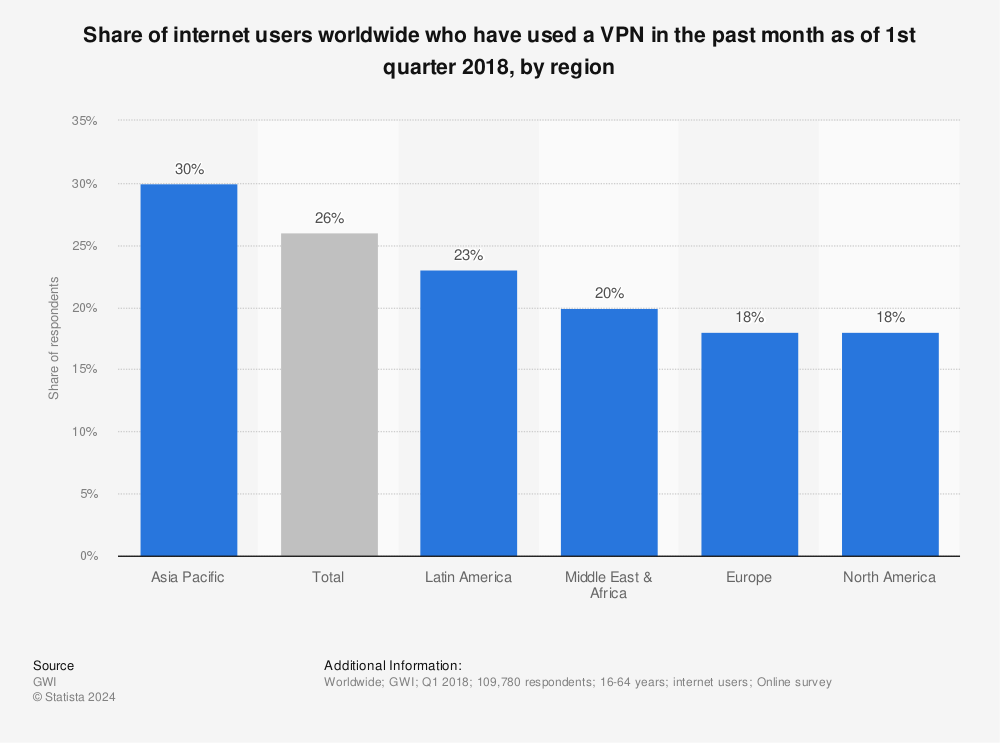Amazon proxies have become a trend in the online business community. The largest online retailer worldwide, Amazon has more than 300 million active users. Not surprisingly businesses and individuals use Amazon proxies to improve their online experience.
In this article, we will review what the proxies for Amazon are and the benefits they offer to both individuals and companies. When speaking about proxies, we have in mind residential rotating proxies due to their high-quality features and high success-rate. Now look at some shocking Amazon statistics first to understand why proxies have become part of the Amazon tool kit of most sellers.
Why use Amazon proxies? The amazing Amazon figures
Using Amazon proxies will increase your chances to become one of the successful sellers on the platform.
Amazon’s market capitalization was more than $1.105 trillion USD as of the end of 2022. With 142 million subscribers alone in the United States, Amazon has more than 200 million Prime members worldwide.
Amazon’s net sales increased from $469.8 billion in 2021 to $514.0 billion in 2022.
On its marketplace, Amazon has more than 2.5 million active sellers. More than 25% of them generate yearly sales of over $1 million. Amazon sellers often make between $26,000 and $810,000 a year. Small and medium-sized firms in the US typically offer more than 4,000 items each minute.
What are Amazon proxies
Using dedicated IP addresses known as Amazon proxies, users can get around the limits and constraints placed by Amazon. These residential rotating proxies can access Amazon’s platform from different locations across the world. Businesses and individuals can do a variety of tasks with Amazon proxies. For example, businesses can use proxies for Amazon to scrape product data, monitor price changes, and monitor the competition.
Benefits of Amazon Proxies
There are numerous benefits of using Amazon proxies. However, the most essential is Increased Security and Privacy. This benefit has two aspects:
IP Address Masking: Amazon proxies utilizing the proxy server’s IP address (instead of the user’s real IP address) allow users to conceal their true IP address. This feature acts as a defense shield against malicious organizations, hackers, or unauthorized individuals. They cannot connect a user’s online activity to their original IP address. Proxies for Amazon add an additional layer of anonymity. To safeguard important information and prevent potential online dangers, the IP address is successfully concealed.
Location anonymity: Amazon proxies also contribute to increased privacy by obscuring the user’s actual location. With a residential proxy the user reveals only the location connected to the proxy server and not the user’s actual location. This anonymity safeguards users’ privacy. It restricts the acquisition of personal data. This happens by preventing websites, advertisers, and other organizations from tracking or monitoring their actual locations.
Use-cases of Amazon proxies
You can leverage Amazon proxies for many business activities. Below is a list of possible actions you can implement:
Web Scraping and Data Mining
Amazon proxies provide organizations with a wealth of chances for web scraping and data mining. You can use Amazon proxies to follow price changes, get product information, and keep tabs on competitors. That data can provide you with useful insights about market trends, consumer behavior, and their competitive environment.
Product data scraping: You can collect information about products from the Amazon marketplace. This includes product descriptions, features, photos, user reviews, and ratings. Using Amazon proxies, you can evaluate the data, identify emerging trends, and make informed business decisions.
Pricing and Inventory Monitoring
Monitoring pricing fluctuations and product availability on the Amazon platform requires the use of Amazon proxies. You can monitor price fluctuations, research the pricing strategies of rivals, and alter your prices. To stay competitive and swiftly respond to market needs, you might benefit from monitoring product availability and inventory levels.
Competitor analyses
Because Amazon proxies make it easier to gather information about competitors, you can have a significant edge. You can learn about pricing strategies, product features, customer reviews, and promotion strategies by scraping rival product listings. You can utilize these analytics to benchmark your goods and revise your strategy.
Using Amazon proxies for Amazon proxy marketing
Using Amazon proxies is the key to Amazon proxy marketing. You can test advertising campaigns using Amazon proxies in several areas to make sure they are targeted to the right consumers. There are countless opportunities, including:
Location-Based Ad Testing: You can imitate your presence in several locations with proxies for Amazon. This is especially helpful for testing marketing campaigns that are intended for regions or nations. You can view advertisements as though they were surfing from a specific region by routing their internet traffic through proxy servers in other locations. Thus, you may evaluate how your advertisements seem. You can pinpoint the proper demographic and modify ads marketing messaging to appeal to local customers.
Geo-targeted advertising: You can successfully implement geotargeted advertising campaigns with the aid of residential rotating proxies. You can dynamically modify your IP addresses to match the desired area by using Amazon proxies. This will guarantee that your adverts are shown to the target market. Eventually, you can target precisely by directly contacting customers, which will raise the chances of engagement and conversions.
Ad verification and quality assurance: You may utilize Amazon proxies to monitor how your advertisements appear across numerous platforms and devices, guaranteeing consistent branding and messaging. You can use proxies to check the accuracy of ad placements and track the exposure of their advertising. You can do it in real time to make sure they are successfully reaching their target market.
Pricing and Offer testing: Amazon proxies can test price plans and marketing promotions in several countries. You can use proxies to evaluate how prices and offers are presented to clients in various locales. Higher ability to modify your pricing strategies to local consumer preferences and market dynamics will lead to increased sales and revenue.
Market research and consumer behavior analysis: This information can be gathered using Amazon proxies. By extracting information from Amazon’s massive product database, you may evaluate client preferences and identify new market trends. With the help of this data-driven strategy, you can enhance your marketing tactics, optimize your efforts in product creation, and customize your offers to the needs of the market.
Innovation and indirect benefits with Amazon proxies
Just think about what information you can collect with Amazon proxies. In the end, it will enable you to:
- Find Emerging Market Trends
- Develop a new product or customize an existing one.
- Perform customer segmentation.
Alongside the above opportunities, you will positively affect few aspects of your Internet SEO.
Improving SEO
Amazon proxies can be used to improve SEO by monitoring keyword ranks, discovering keyword opportunities, and keeping a watch on the competition. You can improve your search engine rankings and listing optimization by examining data from multiple sources.
Keyword Ranking Tracking
With the aid of Amazon proxies, you may monitor your search ranks globally. You can simulate browsing activity from multiple proxy IP addresses to gather information on how your products rank for specific keywords in international marketplaces. You may also use this data to optimize your listings for higher visibility. It goes through identifying places where your items are performing well and those that need work.
Identifying Keyword Opportunities
Optimizing Listings for Different Locations: You can evaluate data from many sources to tailor your product listings for markets with the aid of Amazon proxy. You can customize your listing material, including titles, descriptions, and bullet points, to better resonate with the local audience by studying customers’ preferences and search behavior in different locations.
Analyzing Search Trends: You can use proxies to evaluate search trends across several regions. You may remain ahead of the curve and spot new market trends by keeping an eye on keyword search volumes, popular themes, and customer search behavior. This information enables you as a seller to proactively change your SEO strategies. You will be able to enhance your listings with focus keywords, and profit from the changing needs and interests of your target audience.
Managing Multiple Accounts and Amazon multiple login
Using Amazon proxies, you can manage numerous accounts on the Amazon network. Companies with several Amazon accounts, for example, can access each account from a separate IP address. By using Amazon proxies, you protect your accounts from being detected for suspicious activity. Using an Amazon proxy, you can handle your commercial operations:
Maintaining Separate Identities: You can maintain separate identities for your Amazon accounts by using proxies. This is especially helpful if you manage many brands or operate in several areas or specialties. Companies can maintain their independence and avoid any overlap or association that might confuse clients or tarnish brand identity.
Avoiding IP Blocks and Rate Limits: Amazon places a cap on the number of requests a specific IP address is allowed to submit in each time frame. Businesses who use proxies to disperse their account activity might avoid IP restrictions and rate limits. This ensures ongoing account administration. It makes it possible to manage inventories, update product listings, and carry out other crucial account functions.
Enhanced Productivity and Streamlined Workflow: It can be difficult and time-consuming to manage multiple Amazon accounts. However, using Amazon proxies streamlines the process by providing businesses with a centralized option. You can transfer accounts with the help of proxy servers without continuously signing in and out. It is possible to properly manage several accounts by reducing procedures, saving time, and boosting overall productivity.
Conclusion
Amazon proxies are essential for individuals and businesses who wish to improve the quality of their internet experience. Amazon proxies enable organizations to gather and analyze data, increase security and privacy, enhance the e-commerce experience, and get past IP bans and limitations. Utilizing residential rotating proxies brings permitting access to a variety of locations throughout the world and circumventing restrictions. That is why you need to make use of all benefits provided by Amazon proxies.













